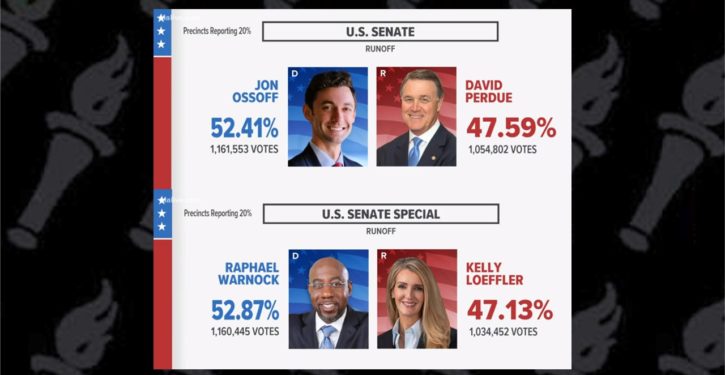
The question Republicans are asking is: Can Gov. Ron DeSantis (R-Fla.) win the White House in 2024? A better, more precise question is: Can he win suburban voters in Pennsylvania?
It’s a question all prospective GOP primary candidates should answer. Suburbanites are swing voters, while urban dwellers trend Democratic and rural residents are overwhelmingly Republican. Therefore, in battleground Pennsylvania, the candidate who captures the suburban vote increases his or her chances of winning the state’s 19 electoral votes to reach the 270 votes required to win the presidency.
Thus, for Republicans itching to win back the White House, the eventual nominee must appeal to suburban voters in Pennsylvania, Wisconsin, Michigan, North Carolina, Arizona and Georgia. Winning or losing these six states reduces the 2024 presidential election to its simplest form. But the likelihood of a winning combination is stacked against the GOP. Why? The answer is challenging Electoral College math along with some reality checks.
Now don’t expect GOP candidates to explain why or how they will win these six critical states before or during the primary season. When the “electability factor” is raised, it’s usually about winning in general. And Republican primary voters can expect to hear variations of “Fighting to save America” and “Let’s take our country back.” Unfortunately, slogans about uniting America are past their sell by date since “uniting” means compromise, which, in the eyes of many Americans, equates to surrender.
Note that the current leading Republican primary candidate, former President Trump, won the six states and the presidency in 2016. But in 2020 he lost five of them (which explains the “former” title). Reversing his losses requires new policies and broader (dare I say moderate?) appeal from a nominee who catches fire among independents in addition to a young and diverse electorate willing to vote for a new White House occupant. Does that candidate exist?
An undisputed political fact is that the Republican base alone cannot elect a president. (Same for the Democratic base.) Yet, the depth of national polarization is illustrated by how both parties begin the 2024 race with a list of likely red or blue states spread across the Electoral College map.
If a party won a state over the last two presidential elections, it is deemed as being the “likely” winner in 2024. After the 2020 election and census, the likely red states provide 219 electoral votes, including Texas, Ohio and Florida. Democrats have 232 votes from likely blue states. Hence, with a total of 538 electoral votes — 87 are battleground votes spread across six states.
So now, let’s examine those six states, starting with the most likely to be named the 2024 “mother of all battlegrounds,” even though it was “red” over the last three presidential elections.
North Carolina: The 2020 census increased its electoral votes from 15 to 16. North Carolina’s economic and population growth supplements the voter rolls with young, skilled, educated residents who tend to be more progressive and racially diverse. Meanwhile, retirees migrating from northern or midwestern states provide some balance.
The state’s movement from solid red began in 2008 when Sen. Barack Obama (D-Ill.) squeezed out a 0.3 percentage-point win over Sen. John McCain (R-Ariz.). Then from 2012 to 2020, North Carolina reverted to red, but it was always close. In 2016, Trump won by a more generous 3.6 percentage points, but his 2020 win was by only 1.3 points. Considering the GOP’s narrow electoral path in 2024, North Carolina is a “must-win” — a status once granted to Ohio and Florida.
Georgia: The GOP’s shocking loss of the state’s 16 electoral votes in 2020 guarantees that the next Republican nominee will become one with Georgians. In 2016, Trump won by 5.2 percentage points, only to lose by 0.2 points in 2020. So, was it Trump or a more general trend toward blue?
Arizona: Here is another 2020 red-to-blue shocker that is either a one-off or a blue presidential trend. For the electoral math equation, the GOP must win back Arizona’s 11 electoral votes that Trump lost by 0.3 percentage points after winning in 2016 by 3.6 points. But Arizona is not a must-win for Democrats because of the cushion that follows.
Michigan, Wisconsin and Pennsylvania: The three “blue wall” states have voted in unison since 1992. The three states total 44 electoral votes, down from 46 in 2020, with Pennsylvania and Michigan each losing one vote.
In 2016 Trump unexpectedly won all three states by fractions that allowed him to reach 270. Then in 2020, Biden reclaimed the “blue wall.” Here are Trump and Biden’s percentage-point margins of victory:
Michigan 2016: 0.2 — 2020: 2.8
Wisconsin 2016: 0.7 — 2020: 0.7
Pennsylvania 2016: 0.7 — 2020: 1.2
In politics, always expect the unexpected, and historical voting data only acts as a guide. Nonetheless, the GOP nominee has a steep climb over the blue wall to win at least one of the three states, along with must-wins in Georgia, Arizona and North Carolina, to reach 272 electoral votes. (Wisconsin, the GOPs best bet, is represented in the 272 total.)
All this electoral math gaming precludes unexpected red or blue flips. Still, the 2024 Republican nominee must focus on these six states to reach 270. GOP primary voters should boldly ask whether their candidate can win these states or risk losing the White House.
Myra Adams writes about politics and religion for numerous publications. She is a RealClearPolitics contributor and served on the creative team of two GOP presidential campaigns in 2004 and 2008. Follow her on Twitter @MyraKAdams.
Cross-posted at The Hill and Substack.



